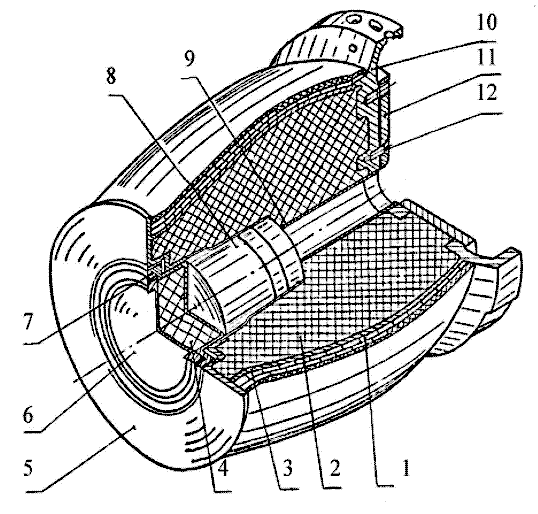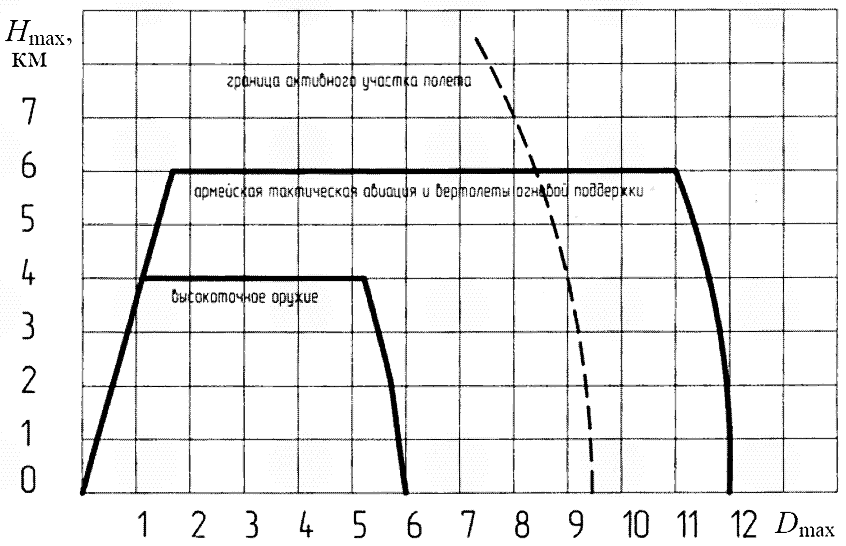The 9E134 Safety Execution Mechanism (PIM) is designed:
- to provide reliable protection against an accidental explosion of a warhead (BC) of a projectile during all stages of storage, transportation and operation;
- to prevent the BC from being detonated during launch and in flight until the launch control command (CSC) and the launch command (KB) are received;
- to issue a detonation impulse to detonate the BC on command from a radio detonator or onboard radio control equipment (ORC);
- to self-destruct the missile in flight when the radio detonator fails to detonate on target.
The PIM can be triggered only after the safety steps have been removed during the flight and the rocket has been launched. The PIM has three safety stages, the removal of which requires the following factors:
- start and exit to the On-Board Chemical Power Supply (OBS) mode, from which the PIM is fed;
- start of the engine - the presence of pressure in its combustion chamber, from which the contacts in the circuit of PIM start are closed by means of a pressure switch;
- an axial overload not less than 19 units in the course of flight of a rocket (directly after start) with time of action not less than 1 s from which at the expense of action of inertial force it is taken off stopping mobile parts PIM on a line of a fire chain and additional contacts in a chain of take-off are closed.
In the course of the launch cycle the HIT of the missile is launched and when it enters the mode it becomes possible to output voltage into the PIM launch circuit. This removes the first stage of PIM protection (this circuit is additionally opened by a pressure switch in the motor and an inertial closing device PIM). During the ejection process, the PIM is in its original state as the PIM voltage supply circuit is open by the motor pressure switch.
When the engine is started and the pressure rises in the combustion chamber, the pressure switch is triggered, closing the voltage supply contacts with HIT in the PIM launch circuit. The second stage of its protection is removed. Under the action of axial acceleration when the engine is running for at least 1 s inertial contactor closes the circuit of PIM start - the third stage of protection is removed, there is a final start of PIM. If axial acceleration lasts less than 1sec, the third stage of protection is removed and the fuse does not finally detonate. A "Radio Fuse Tripping" signal is given to the PIM combat circuit near the target, triggering the PIM and detonating the BC. If no signal is received from the radio fuse when the target is overflying, an electrical signal is received from the Liquidation Crew.

- astounding elements;
- explosive charge;
- shell;
- draughtsman;
- flange;
- lid;
- nut;
- PIM;
- sheathing;
- flange;
- lid;
- screw;
The 9M331 missile's shrapnel and blast warhead, which is part of the 9M331 missile's combat equipment, provides for the destruction of enemy airborne assault equipment by shrapnel hitting elements, as well as for the destruction of explosive devices near the target.
The BC consists of a hull, shrapnel shell, explosive ordnance charge (EO) and an additional detonator. The hull is a welded structure consisting of a thin-walled outer shell 3 and two flanges 5 and 10. Along the axis of the combat unit, inside the explosive charge, the hull has a cavity formed by the inner shell of a 9-step-cylinder shape. On the large diameter side the cavity is fitted with a PIM and an additional detonator (checker 4, nut 7, lid 6), which is screwed into flange 5 on the thread. The detonator shell is placed on the shell 3 of the BC body between flanges 5 and 10. It consists of hitting elements 1, made of high density alloy. Electrical communications from the PIM connector are led through the "D" cavity outside the combat unit.
When an initiating pulse from the PIM is applied to an additional detonator, slot 4 is triggered and causes a detonation of the explosive charge 2. The resulting shock wave and detonation products tear the thin-walled shell 3 of the cavity and provide for the throwing of projectiles. A circular shrapnel field with the specified characteristics is formed in the transverse plane. The angle of scattering of the attacking elements in the longitudinal plane depends on the shape (curvature) of the shell 3 of the shell of the axial part determining the shape of the explosive charge and the shrapnel shell. The size of this angle is chosen from the condition of covering the target by the flow of the attacking elements in different conditions of the missile's meeting with the target, taking into account also the angles of the radio detonator.

The effectiveness of a missile, determined by the engagement of a warhead and the dispersion of its detonation point against a target, is high not only when exposed to weakly defended targets such as aircraft and helicopters, but also when exposed to high-precision weapons, which are often highly durable.